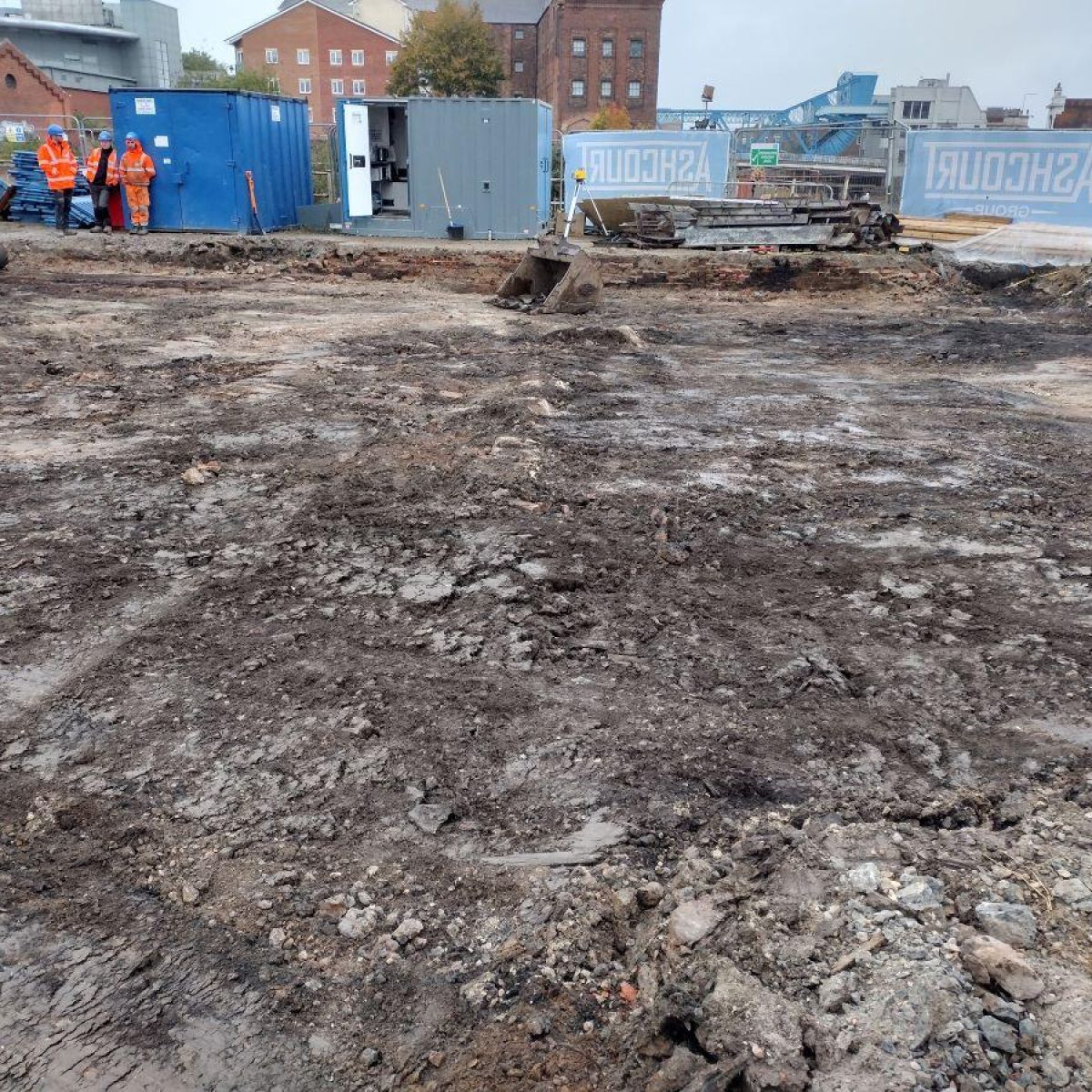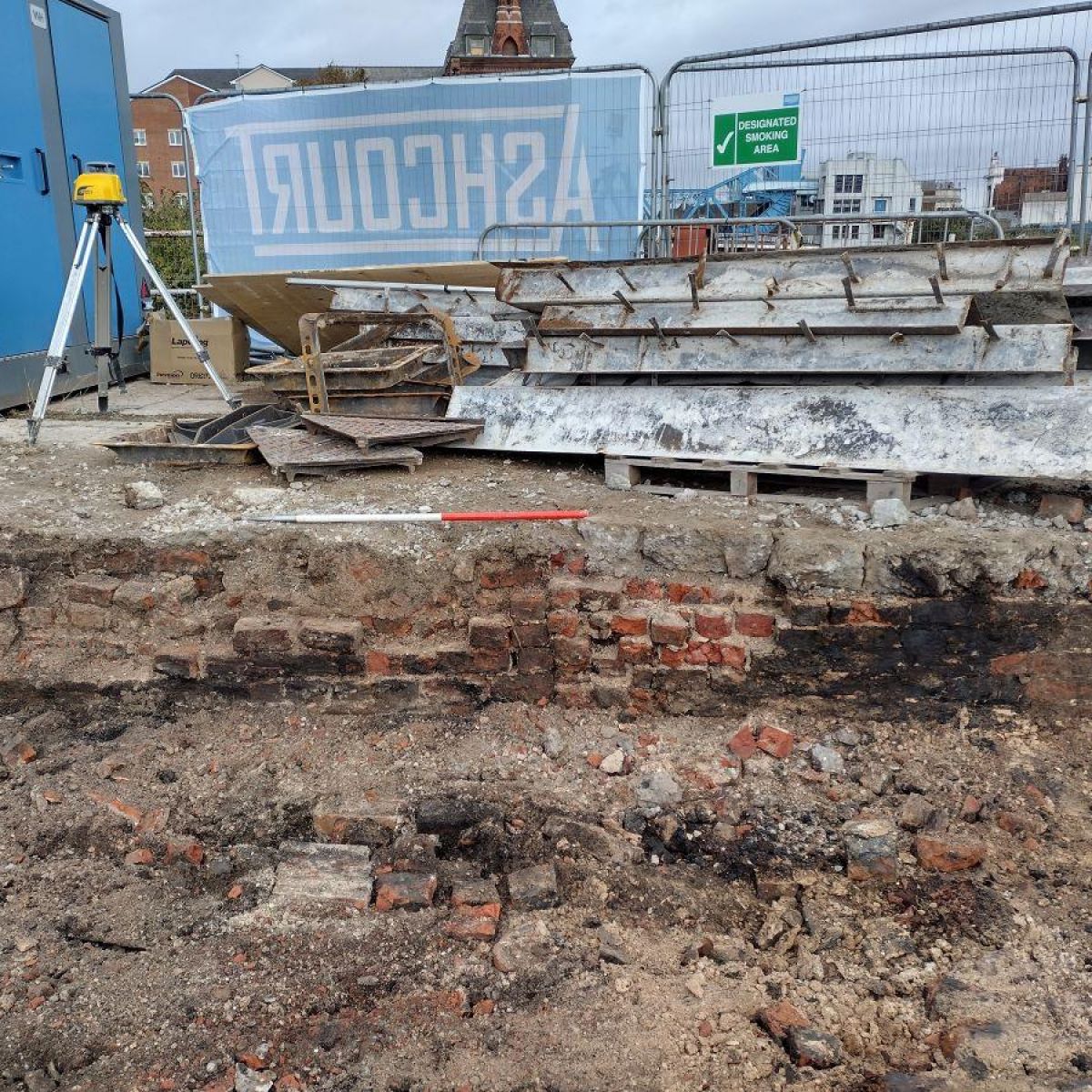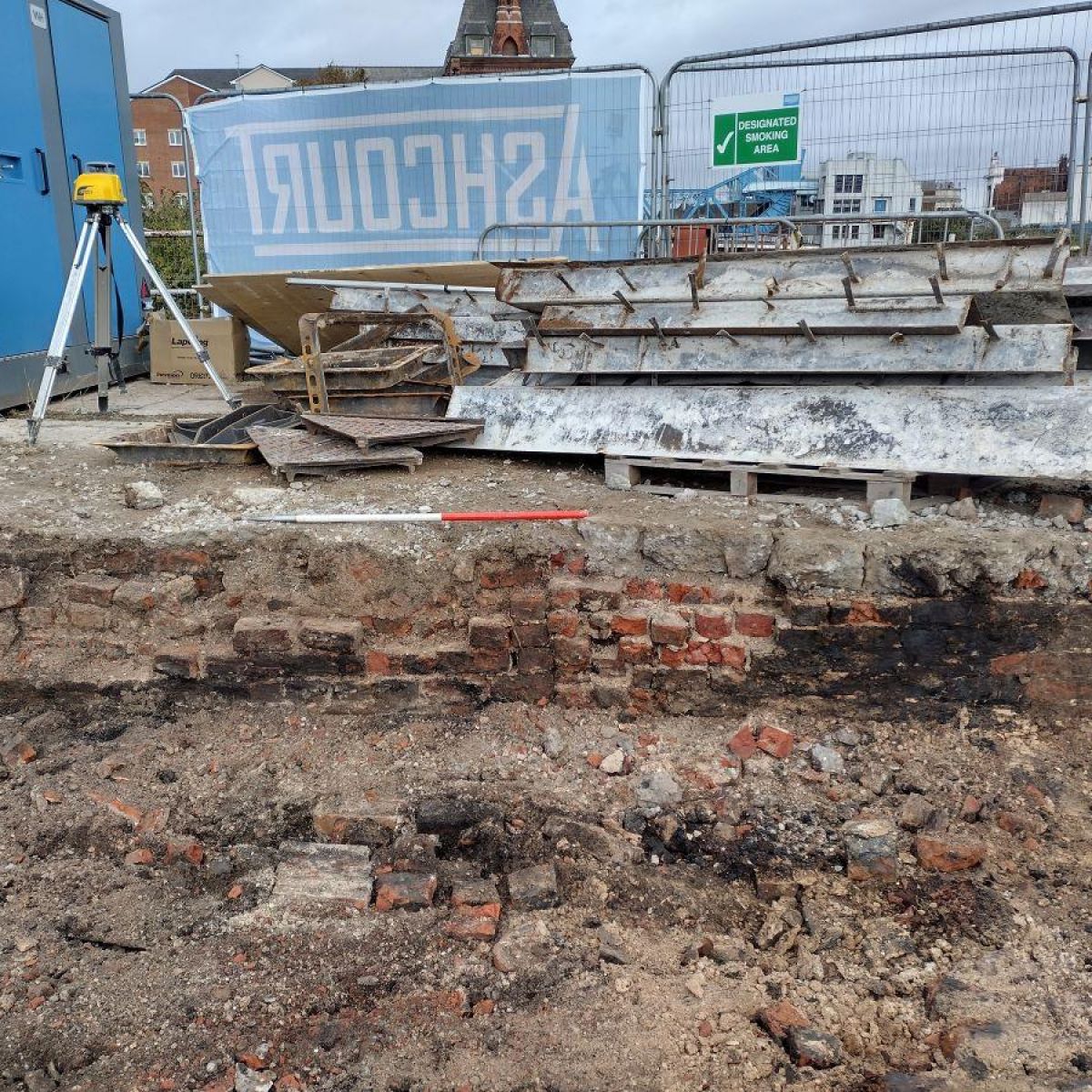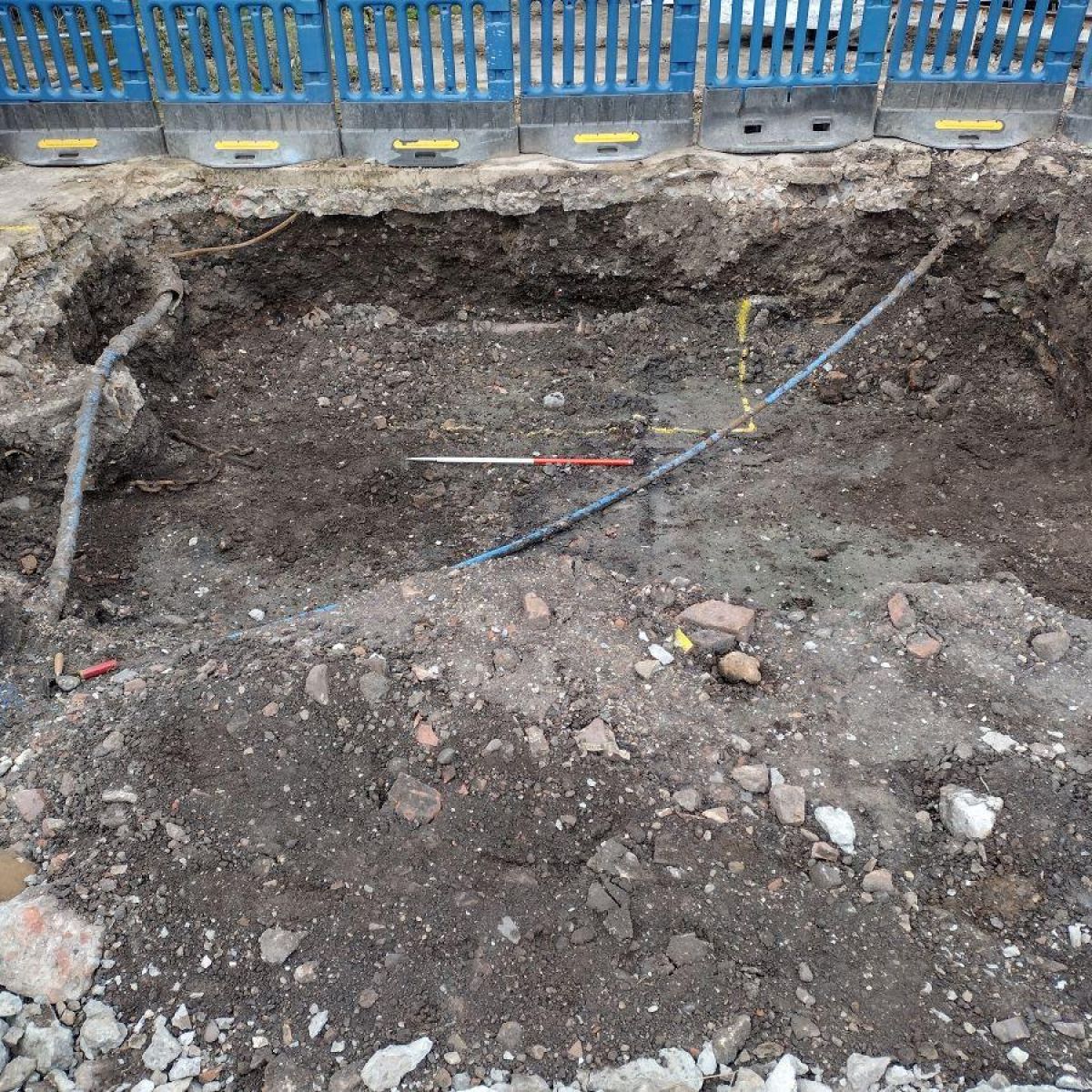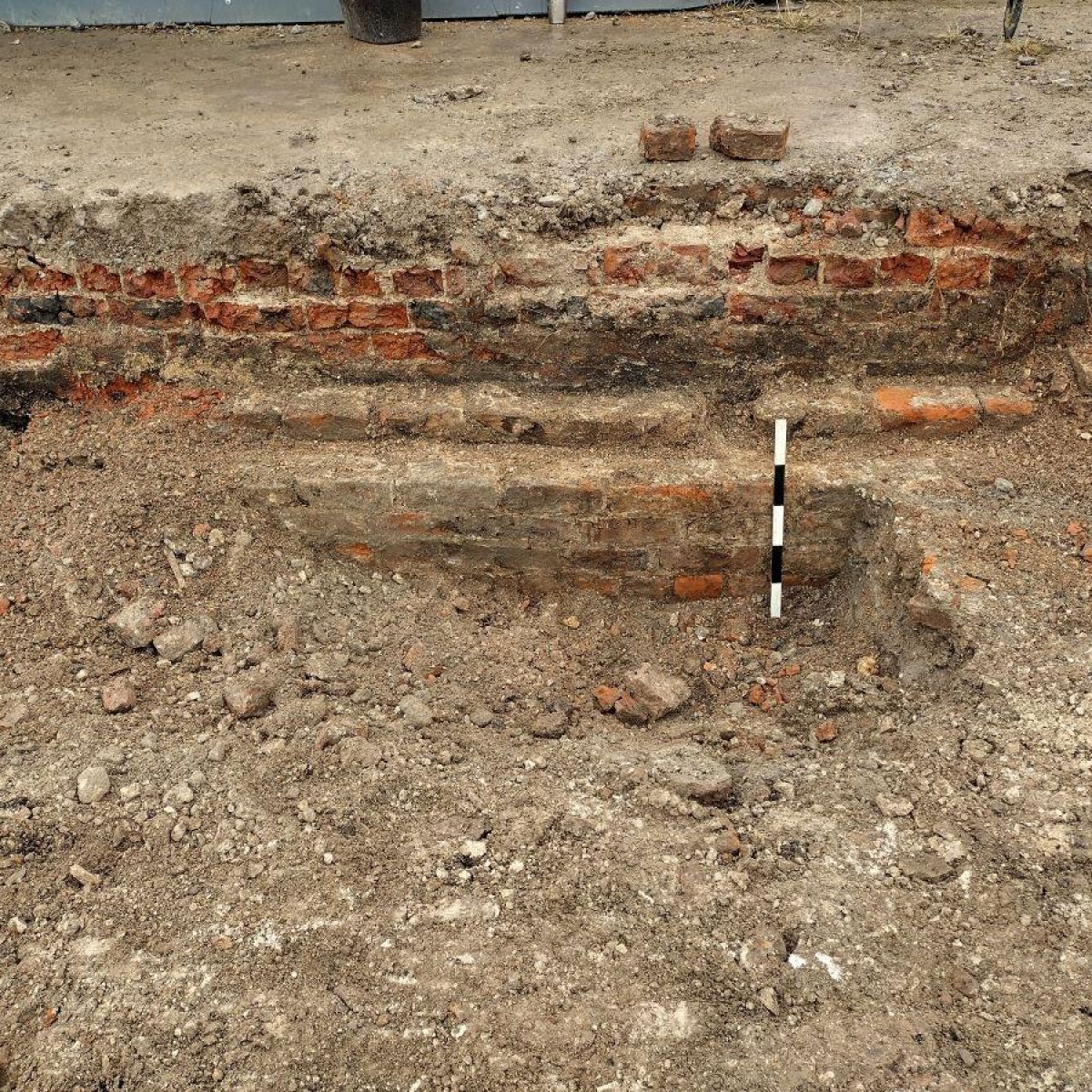Humber Field archaeology are currently on site at the North end Shipyard monitoring the initial ground reduction in advance of the construction of the new visitor centre for the Arctic Corsair.
The stripping has so far revealed elements of the former warehouses that previously occupied the site to the rear of the Dock Office (Oriental Buildings) on Dock Office Row.
The site lies within an area of major archaeological importance, at the northern end of the historic core of the Old Town. The southern part of this block of land overlies part of the medieval and early post-medieval waterfronts, whilst parts of the medieval Town Ditch also run through here.
Previous excavations in the area, to the south of Blaydes Staith have demonstrated the high potential for survival of archaeological remains associated with successive waterfront; these were found to be in an excellent state of preservation, and range in date from the early 14th century through to the 18th century. Parts of medieval ships have been reused in the construction of some of these waterfronts. In addition, storage vats and the remains of buildings were also recorded overlying some of the waterfronts.
In the 18th century, part the site was occupied by a shipyard, owned by the Blaydes family, one of Hull’s principal shipbuilders. They constructed a range of vessels both for commercial use and for the Royal Navy. One such vessel, a collier named ‘Bethia’ built in 1784 was purchase by the Royal Navy for an expedition to the Pacific and renamed HMS Bounty.
The building is to be located on the south side of the dry dock which is to house the Arctic Corsair. This was originally the lock forming the entrance to ‘The Dock’, later known as Queen’s Dock, which opened in 1778.
A report on the findings will be produced on completion of the site works.

